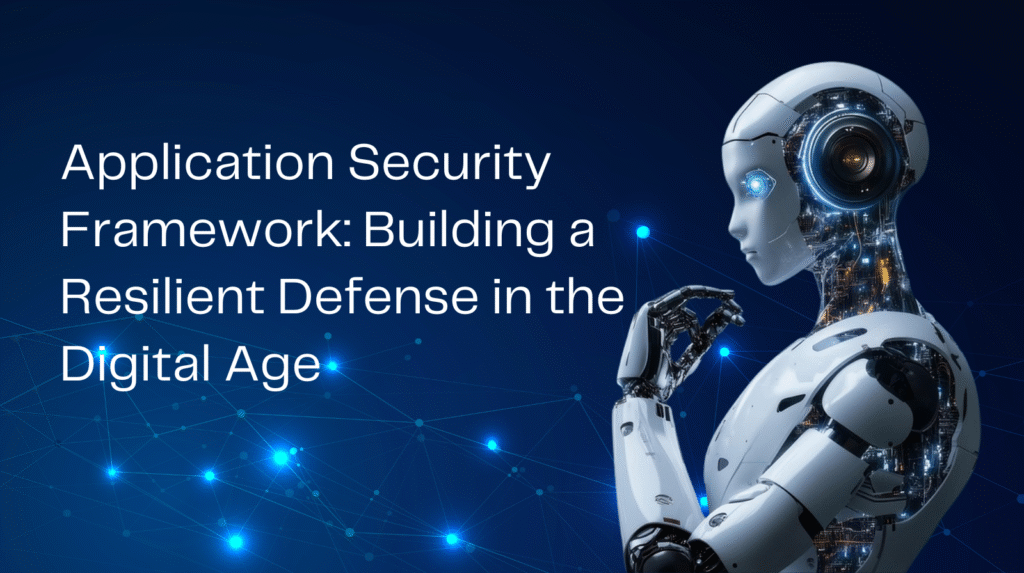This reality underscores the need for a structured approach to application security — one that doesn’t just react to incidents but proactively anticipates them. That’s where the Application Security Framework (ASF) comes in.
An Application Security Framework provides the governance, tools, and methodologies needed to safeguard software throughout its lifecycle — from design and development to deployment and beyond.
What Is an Application Security Framework?
An Application Security Framework is a strategic blueprint that integrates security into every phase of the Software Development Lifecycle (SDLC).
It defines policies, technical controls, and compliance standards that ensure applications remain resilient against vulnerabilities and threats.
Rather than treating security as an afterthought, ASF embeds protection as a continuous, evolving process that aligns with modern DevSecOps principles.
Why It Matters
Every year, organizations lose billions of dollars to breaches stemming from insecure applications. Many of these incidents could have been prevented through structured frameworks and proactive governance.
An effective ASF ensures:
- Security by Design – Embedding protection during development.
- Consistent Compliance – Meeting standards like OWASP, NIST, and ISO 27034.
- Risk Mitigation – Identifying and fixing vulnerabilities early.
- Resilience and Trust – Building confidence among users and stakeholders.
Core Components of an Application Security Framework
1. Security Governance and Policy Management
A robust ASF starts with governance. It defines accountability, leadership roles, and security ownership across teams.
- Establish clear security policies and standards.
- Map security objectives to business outcomes.
- Align with compliance frameworks like NIST, PCI DSS, and ISO 27001.
2. Secure Software Development Lifecycle (SSDLC)
Integrating security into development ensures vulnerabilities are caught before deployment.
- Design: Conduct architecture reviews and threat modeling.
- Development: Enforce secure coding practices.
- Testing: Perform static and dynamic scans (SAST/DAST).
- Deployment: Apply container hardening and environment validation.
- Monitoring: Continuously assess runtime security.
3. Threat Modeling and Risk Assessment
Threat modeling identifies potential attack vectors early in the design phase. Frameworks such as STRIDE or DREAD help prioritize mitigation efforts based on potential impact and exploitability.
4. Vulnerability and Patch Management
Automated scans and regular patch cycles are vital.
Use tools that provide continuous vulnerability intelligence, integrating results directly into CI/CD pipelines to streamline remediation.
5. Identity, Access, and Data Protection
Strong Identity and Access Management (IAM) ensures least-privilege access and multi-factor authentication.
- Encrypt sensitive data at rest and in transit.
- Implement role-based access control (RBAC).
- Regularly audit credentials and permissions.
6. Continuous Monitoring and Incident Response
Security doesn’t end after deployment. Real-time visibility into your application environment allows early detection of anomalies.
- Deploy SIEM and SOAR tools for real-time alerting.
- Maintain comprehensive audit logs and response playbooks.
- Automate remediation workflows wherever possible.
Leading Frameworks and Standards
Organizations can build or benchmark their ASF using these globally recognized standards:
| Framework | Purpose | Highlights |
| OWASP ASVS | Verification standard for application security | Offers detailed controls for secure web applications |
| NIST SSDF (SP 800-218) | Secure software development framework | Provides repeatable processes for developing secure code |
| ISO/IEC 27034 | International ASF guideline | Defines integration of security into business and application processes |
| CIS Controls v8 | Prioritized defense strategies | Outlines actionable steps for securing systems |
| PCI DSS | Payment security compliance | Ensures protection of financial and transactional data |
Common Challenges
Building a strong ASF isn’t without challenges:
- Resistance from development teams due to added steps.
- Tool sprawl causing overlapping or redundant security checks.
- Shortage of skilled application security professionals.
- Constantly evolving threat landscape.
Overcoming these challenges requires a collaborative culture and automation-driven intelligence — areas where modern platforms like Kosmic Eye redefine how application security is managed.
How Kosmic Eye Reinvents Application Security
Traditional frameworks focus on process and policy. Kosmic Eye elevates that approach by adding AI-driven intelligence, automation, and quantum-enhanced analytics that empower organizations to stay ahead of threats.
Unified Visibility
Gain a real-time view of vulnerabilities, misconfigurations, and policy violations across your entire application landscape — whether on-prem, in the cloud, or hybrid.
AI-Powered Threat Detection
Leverage machine learning to detect anomalies, zero-day behaviors, and sophisticated attack patterns that traditional scanners often miss.
Compliance Automation
Automatically map your environment to frameworks like NIST, OWASP, and ISO, ensuring ongoing compliance without manual overhead.
Cloud-Native & Quantum Ready
Kosmic Eye is built for the cloud — securing containers, APIs, and workloads across AWS, Azure, and GCP — while integrating quantum-enhanced analytics for predictive protection.
Seamless Integration
Integrates effortlessly into CI/CD pipelines and DevSecOps workflows, allowing continuous security without slowing innovation.
Benefits of a Kosmic Eye-Enhanced Application Security Framework
- End-to-End Risk Visibility — Monitor code, dependencies, and runtime environments from a single pane of glass.
- Proactive Defense — Predict and prevent threats before they escalate.
- Reduced MTTR (Mean Time to Remediate) — Automated remediation suggestions speed up fixes.
- Regulatory Confidence — Stay compliant across multiple frameworks simultaneously.
- Operational Efficiency — Eliminate alert fatigue with AI-driven prioritization.
Conclusion
An Application Security Framework is no longer a luxury — it’s the foundation of digital resilience.
As cyber threats grow in complexity, organizations must evolve from reactive protection to intelligent, adaptive security models that integrate seamlessly into modern workflows.
With Kosmic Eye, application security becomes smarter, faster, and future-ready — enabling enterprises to build trust, achieve compliance, and operate securely in an ever-changing digital landscape.
Protect. Predict. Prevent. With Kosmic Eye.

